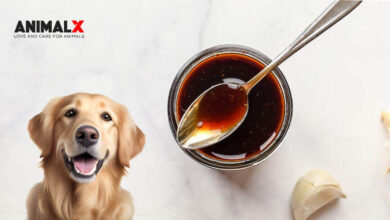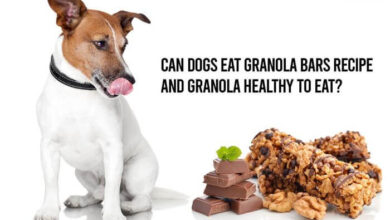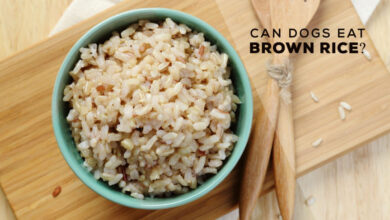Can Dogs Have Frosting? Perfect Explanation of Risks & Benefits
When it comes to sharing our favorite treats with our furry companions, it’s natural to wonder about what’s safe for them to eat. One common query among dog owners is whether dogs can indulge in frosting. Frosting, with its creamy texture and sweet taste, might seem like a harmless indulgence, but is it safe for our canine friends? Let’s delve deeper into this question to understand the risks and benefits associated with dogs consuming frosting.
Table of Contents
Can Dogs Have Frosting?
The short answer is yes, dogs can technically eat frosting, but moderation and caution are key. Frosting is typically made from ingredients like sugar, butter, and sometimes chocolate, which are not necessarily harmful to dogs in small amounts. However, there are several factors to consider before offering frosting to your furry friend.
Ingredients to Watch Out For
While plain frosting might be relatively safe for dogs in small quantities, it’s essential to be mindful of certain ingredients commonly found in frosting recipes that can be harmful to dogs:
- Chocolate – Chocolate is toxic to dogs due to the presence of theobromine, which can cause symptoms ranging from vomiting and diarrhea to seizures and even death in severe cases. Dark chocolate and cocoa powder have higher levels of theobromine compared to milk chocolate, posing a greater risk to dogs.
- Xylitol – Xylitol is a sugar substitute often used in sugar-free frostings and other products. Even small amounts of xylitol can cause a rapid release of insulin in dogs, leading to hypoglycemia (low blood sugar), seizures, liver failure, and potentially death. So, we can call it Paws Off Xyliton.
- Artificial Sweeteners – Some artificial sweeteners, such as erythritol and sorbitol, may cause gastrointestinal upset in dogs when consumed in large amounts. While they are not as toxic as xylitol, it’s best to avoid artificial sweeteners in frosting altogether.
- High Sugar and Fat Content – Frosting is typically high in sugar and fat, which can contribute to obesity, dental issues, and pancreatitis in dogs if consumed regularly or in large quantities.
Potential Risks of Feeding Frosting to Dogs
Feeding frosting to dogs, especially those containing chocolate, xylitol, or excessive sugar and fat, can pose several risks to their health:
- Gastrointestinal Upset – Dogs may experience vomiting, diarrhea, or abdominal discomfort after consuming frosting, particularly if their digestive systems are sensitive to rich or sugary foods.
- Weight Gain and Obesity – Regular consumption of frosting can contribute to weight gain and obesity in dogs, increasing the risk of various health issues such as diabetes, joint problems, and heart disease.
- Dental Problems – The high sugar content in frosting can promote dental decay and plaque buildup in dogs, leading to periodontal disease and tooth loss if proper oral hygiene is not maintained.
- Pancreatitis – Excessive consumption of high-fat foods like frosting can trigger inflammation of the pancreas (pancreatitis) in dogs, causing symptoms such as vomiting, abdominal pain, and lethargy, which may require veterinary treatment.
Benefits of Giving Frosting to Dogs in Moderation
Despite the potential risks associated with feeding frosting to dogs, there are some situations where it may be safe and even beneficial when offered in moderation:
- Special Occasions – Sharing a small amount of frosting with your dog on special occasions like birthdays or holidays can be a fun way to include them in the celebration, as long as the frosting does not contain any harmful ingredients like chocolate or xylitol.
- Mental Stimulation – Offering a small taste of frosting as an occasional treat can provide mental stimulation and enrichment for your dog, especially if they enjoy the novelty of different flavors and textures.
- Training Rewards – Frosting can be used as a high-value reward during training sessions to reinforce positive behaviors and encourage obedience in dogs. Just be sure to adjust your dog’s regular meals accordingly to prevent overfeeding.
- Bonding Experience – Sharing a small treat like frosting with your dog can strengthen the bond between you and provide an opportunity for quality time together, reinforcing your relationship and trust.
Read More: How to Make Humming Bird Food Recipe?
Nutritional Considerations
When evaluating whether frosting is suitable for your dog, it’s essential to consider their overall diet and nutritional needs. Dogs require a balanced diet consisting primarily of protein, carbohydrates, fats, vitamins, and minerals to thrive. While frosting may provide some energy from its sugar and fat content, it lacks essential nutrients that dogs need for optimal health. Therefore, it should only be offered as an occasional treat rather than a dietary staple.
Portion Control
Even if the frosting is safe for dogs to consume, portion control is crucial to prevent overindulgence and potential health problems. Treats, including frosting, should make up no more than 10% of your dog’s daily caloric intake. For small dogs or those prone to weight gain, even smaller portions may be appropriate. Keep in mind that a tiny taste of frosting for a small dog may be equivalent to a much larger serving for a larger breed.
Read More: Can Cats Eat Spam? A Genuine Guideline
Allergies and Sensitivities
Just like humans, dogs can have food allergies or sensitivities to certain ingredients. While frosting ingredients like sugar and butter are unlikely to trigger allergic reactions in dogs, other components such as wheat, dairy, or artificial additives may cause gastrointestinal upset or allergic symptoms in sensitive individuals. If you’re unsure whether your dog has any food allergies or intolerances, it’s best to introduce new foods gradually and monitor their response for any adverse effects.
Health Conditions
If your dog has pre-existing health conditions such as diabetes, obesity, pancreatitis, or dental issues, it’s especially important to be cautious about offering frosting or other high-sugar, high-fat treats. These conditions may require strict dietary management, and indulging in frosting could exacerbate their symptoms or lead to complications. Always consult with your veterinarian for personalized dietary recommendations tailored to your dog’s specific health needs.
Read More: All You Want To Know About Dog Fencing Techniques!
Alternatives for Dogs with Dietary Restrictions
For dogs with dietary restrictions or health concerns, there are plenty of alternative treats available that are both safe and nutritious. Consider options such as commercially available dog treats formulated for specific health conditions, homemade treats using vet-approved recipes, or natural chews like bully sticks or dental chews that promote dental health and satisfy chewing instincts without the added sugar or fat.
Training and Enrichment
In addition to serving as occasional indulgences, treats like frosting can play a valuable role in training and enrichment for dogs. Use small amounts of frosting as a reward for good behavior during obedience training sessions or as a stimulating activity by spreading it inside a Kong toy or freezing it into ice cubes for a refreshing summer treat. Remember to adjust your dog’s daily food intake to account for any treats given to prevent excessive calorie intake.
Read More: Top 5 Best Cat Grooming Wipes
Consultation with a Veterinarian
Ultimately, the decision to offer frosting to your dog should be made in consultation with your veterinarian, who can provide personalized guidance based on your dog’s age, breed, health status, and dietary needs. Your vet can help you determine whether frosting is a suitable addition to your dog’s diet and offer recommendations for safe and healthy treatment options. Additionally, they can advise on appropriate portion sizes and monitor your dog’s overall health and well-being over time.

Behavioral Implications
Introducing frosting or other high-value treats into your dog’s diet can have behavioral implications that extend beyond just their physical health. Dogs are highly food-motivated animals, and offering tasty treats like frosting can reinforce certain behaviors and strengthen the bond between you and your furry companion.
However, it’s essential to be mindful of the potential impact of treat-giving on your dog’s behavior and training regimen. If not managed properly, excessive treat consumption can lead to begging, food guarding, or even obesity-related behavior problems.
To mitigate these issues, consider the following strategies:
- Use Treats Sparingly: Reserve frosting treats for special occasions or as occasional rewards for desired behaviors. Avoid over-reliance on treats as a primary motivator, and incorporate other forms of reinforcement, such as praise, toys, or playtime, into your training sessions.
- Practice Moderation: Keep portion sizes small and monitor your dog’s overall treat intake to prevent overindulgence. Balance treat-giving with your dog’s regular meals to ensure they maintain a healthy weight and nutritional balance.
- Pair Treats with Training: Use frosting treats strategically during training sessions to reinforce commands and encourage desired behaviors. By associating treats with positive experiences, you can strengthen your dog’s obedience and responsiveness while minimizing the risk of behavioral issues.
- Offer Alternative Rewards: Explore non-food rewards, such as verbal praise, petting, or access to favorite activities, as alternatives to food treats. This can help diversify your training approach and prevent your dog from becoming solely focused on food rewards.
- Monitor Behavioral Changes: Pay attention to any changes in your dog’s behavior, such as increased begging, food aggression, or weight gain, that may indicate an over-reliance on treats or an imbalance in their diet. Adjust your treat-giving practices accordingly to address any behavioral concerns.
By incorporating these considerations into your approach to treat-giving, you can ensure that frosting treats enhance your dog’s training and bonding experiences without compromising their overall well-being or behavior. Remember that a healthy balance of rewards, consistency, and positive reinforcement is key to fostering a strong and harmonious relationship with your canine companion.
Read More: Can Dog Eat Mango?
Safe Alternatives to Frosting for Dogs
If you’re looking for safe and healthy alternatives to frosting for your dog, consider the following options:
- Plain Yogurt – Plain, unsweetened yogurt is a nutritious and dog-friendly alternative to frosting. It’s low in sugar and can be served in small amounts as an occasional treat or mixed with fruits or vegetables for added flavor.
- Peanut Butter – Natural peanut butter (without xylitol) is a favorite treat for many dogs due to its rich flavor and creamy texture. Spread a thin layer on a toy or treat puzzle for a delicious and mentally stimulating snack.
- Fruit Slices – Fresh fruits like apples, bananas, and strawberries can be sliced and offered as healthy treats for dogs. Just be sure to remove any seeds, pits, or cores that may be harmful, and feed in moderation due to the natural sugar content.
- Homemade Dog Treats – Consider making homemade dog treats using dog-friendly ingredients like pumpkin, oats, carrots, and lean meats. There are countless recipes available online that are easy to prepare and tailored to your dog’s dietary needs.
Read More: How to Ensure You Have Happy Pets?
Final Verdict
While dogs can technically eat frosting, it’s important to exercise caution and moderation to ensure their safety and well-being. Avoid frosting recipes containing chocolate, xylitol, or excessive sugar and fat, and opt for healthier alternatives when possible. Remember that treats should only constitute a small portion of your dog’s diet, and always consult with your veterinarian if you have any concerns about your dog’s nutrition or dietary choices. With responsible feeding practices and a bit of creativity, you can treat your dog to occasional indulgences while keeping them happy, healthy, and safe.
Frequently Asked Questions (FAQs)
Can I give black forest cake’s creme to my puppy?
It’s not recommended to give black forest cake cream to your puppy. The ingredients in the cream, such as sugar and dairy, can be harmful to dogs, potentially leading to digestive issues like upset stomach, diarrhea, or even pancreatitis.
Do dogs like sweet foods like frosting or icing?
While some dogs may enjoy the taste of sweet foods like frosting or icing due to their high sugar content, it’s not ideal for their health. Dogs’ taste preferences vary, but their bodies aren’t designed to process large amounts of sugar. Feeding them sweets regularly can lead to weight gain, dental problems, and other health issues.
Can a dog eat vanilla cake? If so, are they allowed a lot?
A small amount of plain vanilla cake occasionally might not harm your dog, but it’s not a healthy or recommended treat. The sugar and fat content in cake can lead to obesity and other health issues in dogs. It’s best to stick to dog-friendly treats made specifically for them.
My Dog Ate Buttercream Frosting What Should I Do?
If your dog ate buttercream frosting, monitor them closely for any signs of discomfort or illness such as vomiting, diarrhea, or lethargy. Contact your veterinarian for advice on whether further action is needed based on your dog’s size, health condition, and the amount ingested.
Can Dogs Eat Icing?
Dogs can technically eat icing, but it’s not recommended. Icing is typically high in sugar and fat, which can lead to digestive upset and other health issues in dogs. It’s best to avoid feeding icing to your dog and opt for healthier treats specifically made for them.
Can Dogs Have Frosting (Icing)?
While dogs can have frosting or icing in very small amounts as an occasional treat, it’s not a healthy choice for them. The high sugar content can lead to weight gain, dental problems, and other health issues. It’s better to offer your dog treats that are specially formulated for their nutritional needs.
My Dog Ate Frosting Will He Get Sick?
Whether or not your dog will get sick from eating frosting depends on various factors such as the amount consumed, your dog’s size and health condition, and the ingredients in the frosting. Monitor your dog closely for any signs of illness and consult your veterinarian for guidance on whether any further action is needed.
Can you give dogs frosting?
While you can technically give dogs frosting in very small amounts as an occasional treat, it’s not recommended. Frosting is typically high in sugar and fat, which can lead to weight gain, dental issues, and other health problems in dogs. It’s best to avoid feeding frosting to your dog and opt for healthier treats specifically formulated for them.
What happens if a dog eats a whole can of frosting?
If a dog consumes a whole can of frosting, it could lead to various health issues depending on the size of the dog, the ingredients in the frosting, and the dog’s overall health. Potential consequences may include gastrointestinal upset, vomiting, diarrhea, pancreatitis (especially if the frosting is high in fat), and weight gain. In severe cases, it could lead to more serious complications requiring veterinary attention.
Can my dog eat buttercream?
Buttercream is not recommended for dogs. It typically contains high amounts of sugar, butter, and other ingredients that are not suitable for canine consumption. Feeding buttercream to your dog regularly can lead to weight gain, digestive issues, and other health problems. It’s best to stick to treats specifically made for dogs or consult your veterinarian for suitable alternatives.
Is cake decorating gel safe for dogs?
Cake decorating gel may not be safe for dogs, depending on the ingredients. Some cake decorating gels contain artificial colors, flavors, and other additives that could be harmful to dogs if ingested in large quantities. It’s best to avoid giving cake decorating gel to your dog and opt for safer treats specifically formulated for canine consumption. If you’re unsure about the safety of a particular product, it’s best to consult your veterinarian.



